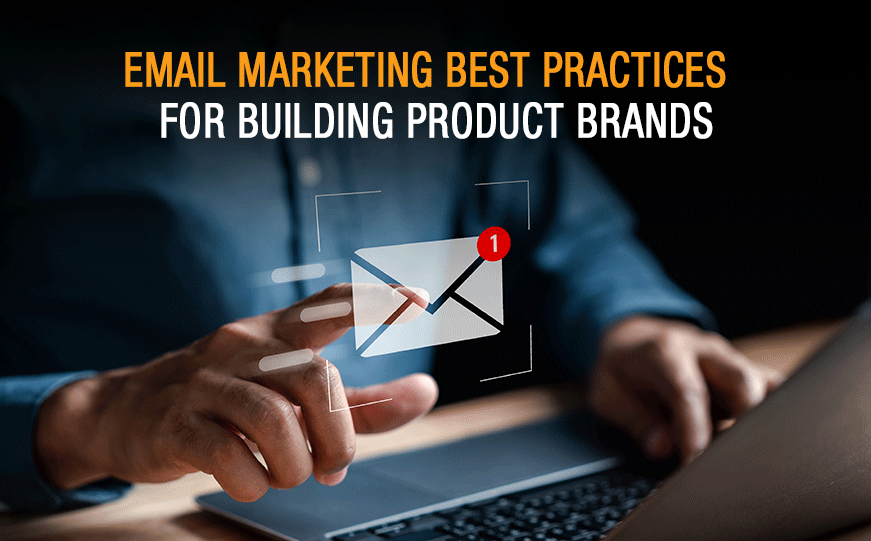Hardly a week goes by without a discussion or two about how to get the most value out of CRM and email automation platforms.
Brands seek counsel on best practices for content, subject lines… and the cadence for when to send what content.
How to clean contacts. Protect sender reputation. And ensure CAN-SPAM compliance.
While social media engagement rates have plummeted – and now zero-click searches threaten even the mighty Google – email marketing consistently delivers significant return on investment. A study by the Data & Marketing Association reveals that email marketing has the potential to generate $42 for every $1 spent. That’s what we call effective and efficient!
This marketing strategy enables brands to reach a targeted audience, nurture leads, strengthen brand loyalty and protect intellectual property… all at the same time. It’s impossible to overstate that for building product brands, the ability to communicate directly with stakeholders, decision-makers and potential customers through email cannot be matched.
After all, the platform remains in charge. Everyone uses email.
It doesn’t change. You own it.
And it’s largely free to deliver.
Growing and Nurturing an Emailing Database
Establishing a robust email list requires strategic efforts to leverage existing networks. Satisfied builder products customers enjoy referring colleagues and peers…fostering organic growth with high-quality leads. And offering valuable content through gated assets – such as whitepapers, case studies and industry reports – attracts potential subscribers who will continue to find value in the information provided.
Nurturing leads is critical. Segmenting the list based on criteria such as industry, company size and job title allows for personalized communication. Tailored content – including product updates, industry insights and educational resources – keeps recipients engaged and informed. HubSpot research indicates that segmented email campaigns can lead to a 760% increase in revenue.
Automation tools play a critical role. Drip campaigns guide prospects through the buyer’s journey… delivering relevant content at each stage. According to the Annuitas Group, nurtured leads produce a 20% increase in sales opportunities compared to non-nurtured leads.
Maintaining and Preserving Brands and Intellectual Property
In building materials marketing, brand reputation and intellectual property are vital assets. Consistency in user-experience across all email communication reinforces brand identity. This includes leveraging unique messaging that aligns with the brand’s voice and values… building trust and loyalty.
Ensure that all content – including images and written material – is original or properly licensed. Unauthorized use of third-party content can lead to legal issues. Using email authentication protocols prevents email spoofing that could harm the brand’s credibility.
Monitoring the use of brand assets by partners and affiliates ensures adherence to brand guidelines. Unauthorized or incorrect use dilutes brand value. And can confuse the market.
8 Tips for More Effective Email Marketing
- Personalization: Personalizing emails beyond using the recipient’s name significantly impacts engagement. Experian reports that personalized emails deliver six times higher transaction rates.
- Segmentation: Segmenting an email list based on demographics, behavior and preferences allows for targeted and relevant messaging. This approach increases open rates by 14.31% and reduces unsubscribe rates by 9.37%, according to Mailchimp.
- Automation: Leveraged automation tools for drip campaigns and triggered emails ensures timely and relevant communication… enhancing lead nurturing and conversion rates.
- Quality Content: Providing valuable content tailored to the audience’s needs fosters trust and positions brands as industry leaders. This includes sharing industry news, case studies and educational resources.
- Mobile Optimization: 46% of emails are opened on mobile devices… so ensuring emails are responsive and mobile-friendly is crucial for maintaining engagement.
- Compliance: Adhering to regulations such as GDPR and CAN-SPAM Act protects brands from legal issues. And maintains recipients’ trust.
- A/B Testing: Regularly testing different elements of email campaigns – such as subject lines, call-to-action buttons and layouts – helps to identify what resonates most with audiences. And optimizes campaign performance.
- Analytics: Monitoring key metrics – such as opens, click-throughs and conversion rates – provides insights into campaign effectiveness. While highlighting areas, for improvement.
Email marketing, when executed strategically, serves as one of the most powerful tools for building product brands. By focusing on growing and nurturing a high-quality database – maintaining consistent branding and implementing best practices – brands can maximize the benefits of email marketing, while protecting their valuable intellectual property. Analyzing metrics underscores the importance and effectiveness of this approach… solidifying email marketing’s role as an essential component of a comprehensive digital marketing strategy.
If you’d like to explore how email marketing can empower a marketing strategy, we’re here to help. Send an email to Steve at sk@kleberandassociates.com to get the conversation started.




